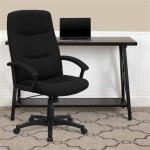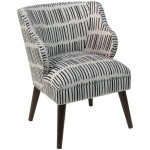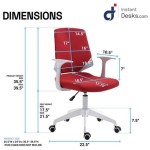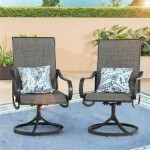Butcher Block Kitchen Table Chairs: A Comprehensive Guide
Butcher block kitchen tables offer a unique blend of durability, functionality, and aesthetic appeal. Choosing the right chairs to complement these robust tables is crucial to creating a harmonious and comfortable dining space. This guide explores various factors to consider when selecting butcher block kitchen table chairs, offering insights into materials, styles, and practical considerations.
Material Matters: Durability and Aesthetics
The material of the chairs plays a significant role in both the overall look and longevity of the dining set. Hardwood chairs, like oak or maple, provide a classic and sturdy option, complementing the natural wood of the butcher block table. Metal chairs, particularly those with a powder-coated finish, offer a modern industrial feel and excellent durability. Upholstered chairs introduce comfort and a touch of elegance, but require more care and maintenance, particularly in a high-traffic kitchen environment.
Style Harmony: Creating a Cohesive Look
The style of the chairs should complement the overall design aesthetic of the kitchen and the specific style of the butcher block table. A rustic or farmhouse-style kitchen often pairs well with Windsor chairs, ladder back chairs, or even benches. For a more contemporary look, consider sleek metal chairs, minimalist wooden chairs, or upholstered chairs with clean lines. If the butcher block table has a more traditional design, classic wooden chairs with turned legs or upholstered Parsons chairs can create a timeless appeal.
Comfort and Ergonomics: Prioritizing Functionality
Beyond aesthetics, comfort is paramount, especially for extended meals and gatherings. Consider chairs with contoured seats and backs that provide adequate support. Upholstered chairs offer enhanced comfort, while wooden chairs can benefit from the addition of cushions. The height of the chairs should be proportionate to the table height, allowing for comfortable legroom. Ideally, there should be approximately 12 inches between the seat of the chair and the underside of the table.
Size and Scale: Ensuring a Proper Fit
The size and scale of the chairs should be carefully considered in relation to the size of the butcher block table and the overall kitchen space. Oversized chairs can overwhelm a smaller table or a compact kitchen, while undersized chairs can appear disproportionate with a larger table. Measure the available space and the dimensions of the table before selecting chairs to ensure a comfortable and visually appealing arrangement. Consider the number of people the table needs to accommodate and choose the appropriate number of chairs accordingly.
Maintenance and Durability: Practical Considerations
The kitchen is a high-traffic area, so choosing chairs that are easy to clean and maintain is essential. Hardwood and metal chairs are generally easy to wipe clean, while upholstered chairs may require more specialized cleaning methods. Consider the durability of the materials, especially if the chairs will be subjected to frequent use. Solid wood and metal frames offer greater longevity compared to less robust materials. For families with young children, chairs made from durable and easy-to-clean materials are highly recommended.
Budget Considerations: Finding the Right Balance
Butcher block kitchen table chairs are available at a wide range of price points. Set a budget before beginning the selection process to narrow down the options. While solid wood and high-quality upholstered chairs may be more expensive, they often offer greater durability and longevity. Metal chairs and less expensive wood options can provide a more budget-friendly alternative without compromising on style or functionality. Consider the long-term value and the specific needs of the household when making a decision.
Mixing and Matching: Creating a Unique Look
While a matching set of chairs can create a cohesive and formal look, mixing and matching different chair styles can add visual interest and personality to the dining area. Consider pairing different chair styles within the same material or color family to maintain a sense of harmony. For example, combining wooden chairs with different back designs or upholstered chairs with varying fabrics can create an eclectic yet cohesive look. Mixing and matching allows for greater flexibility and the opportunity to express individual style.

Behling Solid Butcher Block Kitchen Island With Baskets And Storage Shelf Trolley Cart Cabinet

Shop Butcher Block Dining Set Handcrafted Amish Furniture From Country Lane

Lancaster Table Seating Mid Century 36 Square Vintage Finish Butcher Block Standard Height With 2 Chairs

Kitchen Island Butcher Block Table Modern Mid Century Wood I Strong Oaks Woodshop

Butcher Block Table And Chairs Farmhouse Style Makeover

Ronnie Kitchen Island Custom Butcher Block With Seating Option Dining Table Storage Etsy

Lancaster Table Seating 30 X 48 Rectangular Standard Height Wood Butcher Block With 4 Black Cross Back Chairs Vintage

Kitchen Island Custom Butcher Block With Option For Seating Dining Table Storage Donna Etsy

Butcher Block Table And Chair Set

30 X 48 Standard Height Wood Vintage Butcher Block Table With 4 Boomerang Chairs








